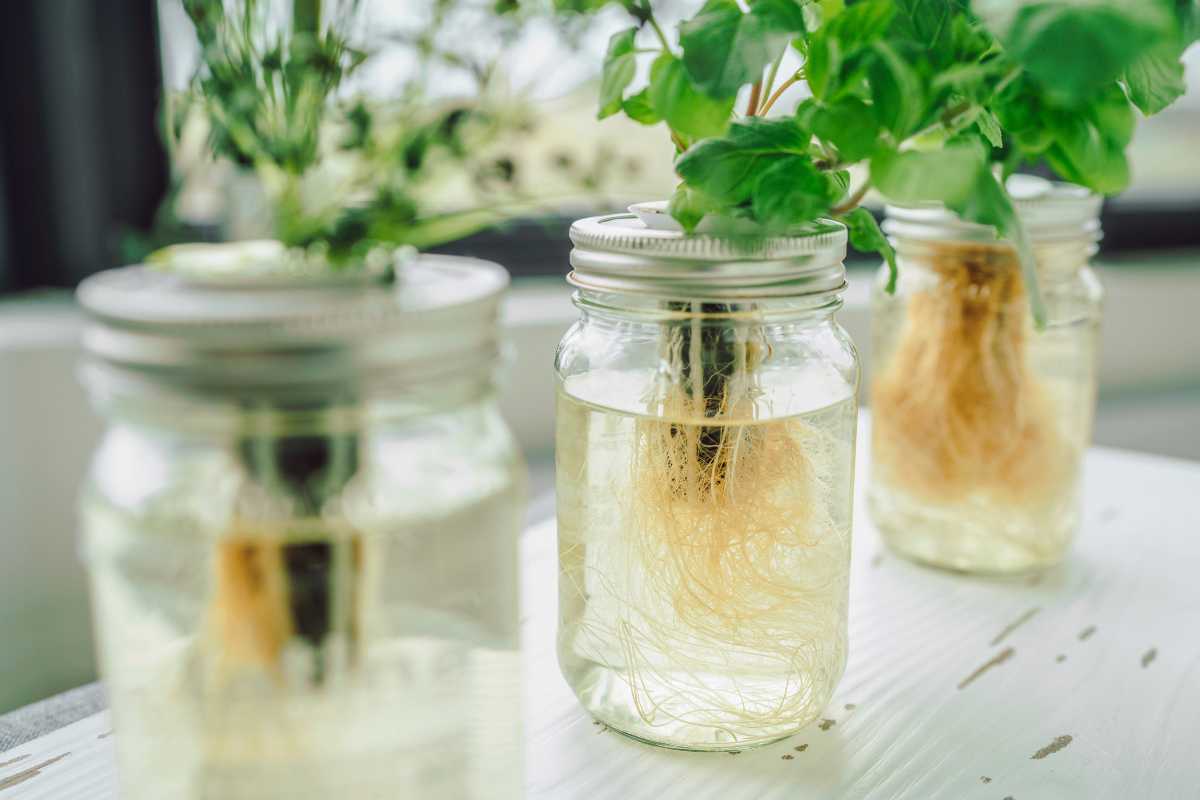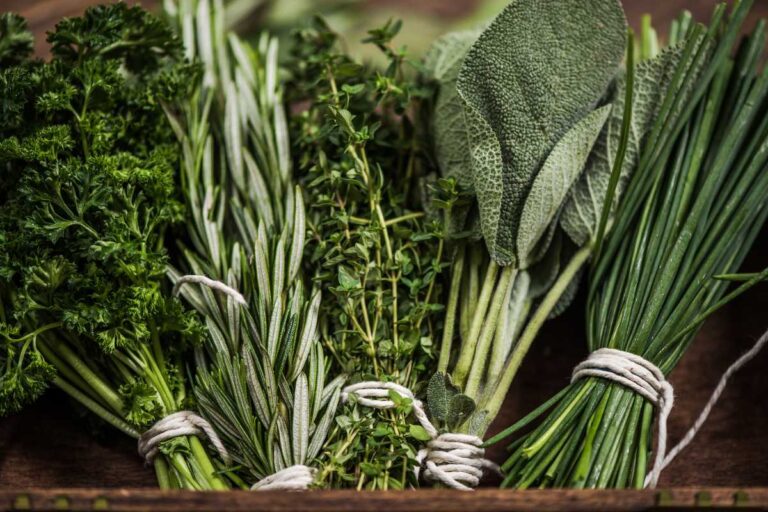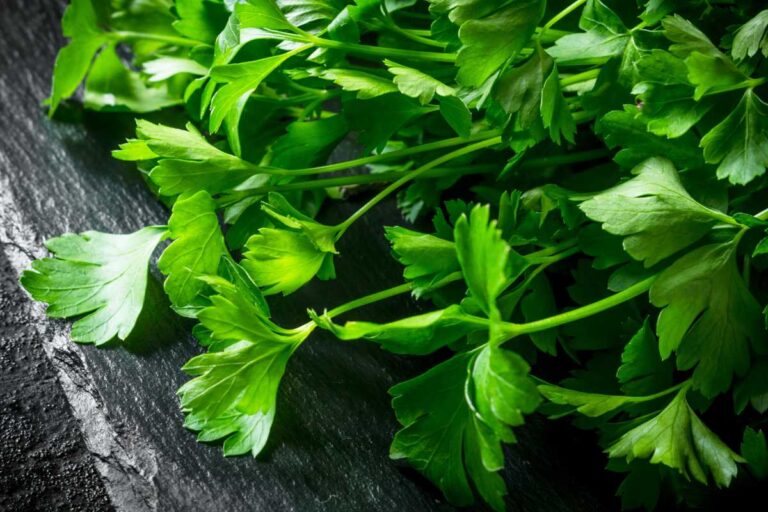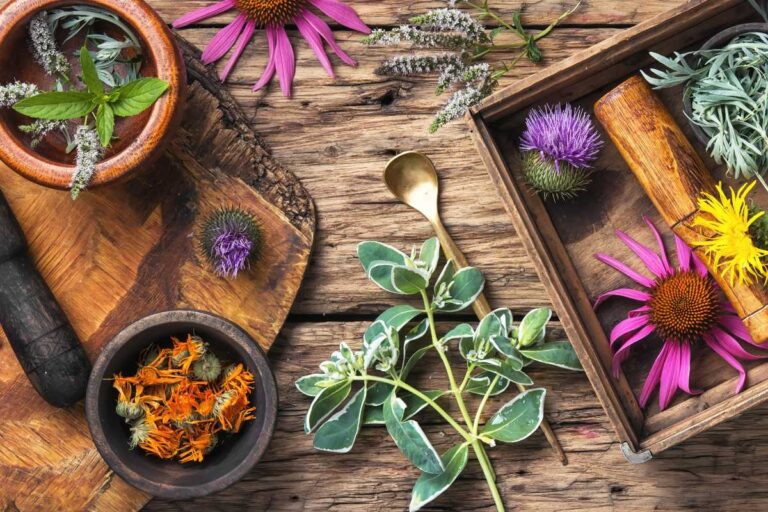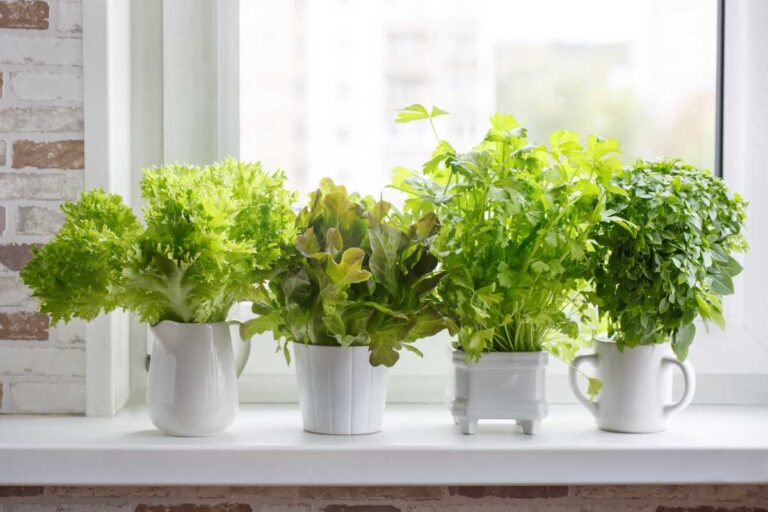The Best Herbs to Grow Indoors: Top 10 Picks for Year-Round Gardening!
The Best Herbs to Grow Indoors: Top 10 Picks for Year-Round Gardening!
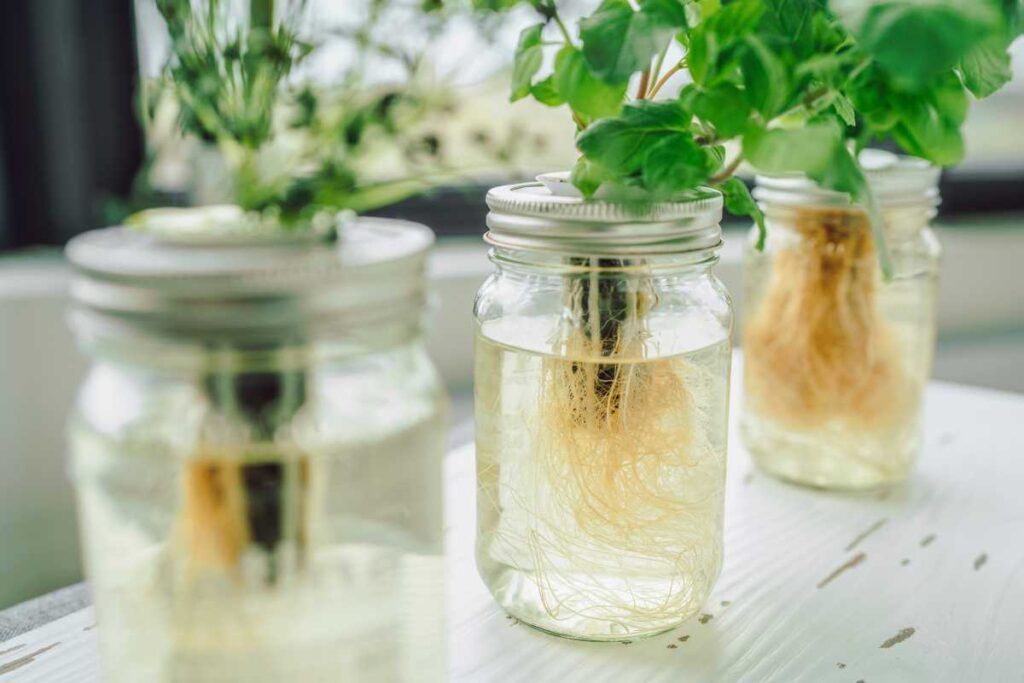
Indoor herb gardens offer an easy and convenient way to have fresh herbs year-round, regardless of limited outdoor space or harsh climates. By growing herbs indoors, individuals can enhance the flavor of their dishes with homegrown goodness.
Whether it’s chives for cooking or basil for a refreshing summer salad, having an indoor herb garden allows one to enjoy the benefits of fresh herbs without relying solely on store-bought options.
Factors such as watering, individual leaves’ harvest, soil quality, and light exposure play crucial roles in ensuring successful growth. Finding the right balance of moisture and sunlight is key to nurturing healthy plants that yield abundant flavors.
With proper care and attention, anyone can create a thriving indoor herb garden in the comfort of their own home.
So if you’re looking to elevate your culinary creations with aromatic herbs or simply want to bring a touch of greenery indoors, an indoor herb garden is the perfect solution.
| Herb | Short Explanation |
|---|---|
| Basil | A versatile herb with a sweet and slightly peppery flavor, great for adding to salads, pasta dishes, and sauces. |
| Chives | These mild onion-flavored herbs are perfect for garnishing soups, salads, and baked potatoes. |
| Cilantro | Also known as coriander, cilantro adds a fresh and citrusy flavor to Mexican, Indian, and Asian dishes. |
| Dill | Dill has a distinct tangy flavor that complements fish, pickles, and salads. It’s also commonly used in dips and dressings. |
| Mint | Mint leaves are refreshing and commonly used in teas, cocktails, desserts, and savory dishes like salads and curries. |
| Oregano | With a robust and slightly bitter taste, oregano is a staple in Italian, Greek, and Mediterranean cuisines. |
| Parsley | Parsley has a mild and slightly peppery taste, making it a popular herb for garnishing and adding flavor to various dishes. |
| Rosemary | This aromatic herb is often used in roasted meats, vegetables, bread, and infused oils. It has a fragrant and pine-like flavor. |
| Sage | Sage has a strong and earthy flavor that pairs well with poultry, stuffing, and hearty dishes like stews and casseroles. |
| Thyme | Thyme leaves have a subtle and slightly minty flavor. They are commonly used in soups, stews, roasted meats, and marinades. |
Tired of struggling with outdoor herb gardens in unpredictable weather? Discover the secret to successful herbal gardening indoors and enjoy fresh herbs year-round. Check out our article now!
Best Herbs for Successful Indoor Cultivation
Basil, Mint, and Parsley: Adaptability at its Finest
Basil, mint, and parsley are renowned for their adaptability, making them ideal choices for successful indoor cultivation. These herbs possess the remarkable ability to thrive in various growing conditions, allowing even novice gardeners to enjoy a flourishing indoor herb garden.
Basil is an aromatic herb that adds a delightful fragrance to your living space while enhancing your culinary creations. With its vibrant green leaves and distinctive flavor profile, basil can be used in a multitude of dishes ranging from pasta sauces to salads. It is rich in antioxidants and possesses antibacterial properties that contribute to overall well-being.
Mint is another versatile herb that flourishes indoors with relative ease. Its refreshing aroma invigorates the senses and its cooling taste complements both sweet and savory dishes. Whether you’re brewing a soothing cup of peppermint tea or adding a touch of freshness to your summer cocktails, having mint readily available at home ensures you never run out of this delightful herb.
Parsley completes the trifecta of adaptable herbs suitable for indoor cultivation. This versatile ingredient not only enhances the flavor of numerous recipes but also provides an excellent source of vitamins A, C, and K. Whether you sprinkle it on top of pasta dishes or incorporate it into homemade pesto sauce, parsley adds a burst of freshness to any meal.
Chives and Thyme: Hardy Herbs with Minimal Care Needs
If low-maintenance herbs are what you seek for your indoor garden, look no further than chives and thyme. These hardy herbs require minimal care while providing an abundance of flavorsome benefits.
Chives are known for their mild onion-like taste which makes them an excellent addition to salads, omelets, or as a garnish on soups and baked potatoes. They thrive in containers placed near sunny windowsills where they can receive ample sunlight. With their slender green stalks and delicate purple flowers, chives also add aesthetic appeal to your indoor herb garden.
Thyme, with its woody stems and small aromatic leaves, is a resilient herb that can withstand neglect and still flourish. Its earthy flavor complements a wide range of dishes, including roasted vegetables, grilled meats, and soups. Thyme prefers well-drained soil and requires moderate sunlight to thrive indoors. With minimal effort, you can enjoy the delightful taste and enticing aroma of fresh thyme year-round.
Rosemary and Cilantro: Unique Flavors for Your Indoor Oasis
To infuse your indoor garden with unique flavors, consider cultivating rosemary and cilantro. These herbs not only provide distinctive tastes but also offer various health benefits.
Rosemary is an evergreen herb known for its pine-like fragrance and robust flavor profile. It pairs exceptionally well with roasted meats, potatoes, or even bread. Beyond its culinary applications, rosemary has been associated with improved digestion, enhanced memory function, and reduced inflammation. Growing this versatile herb indoors allows you to have easy access to its aromatic essence whenever inspiration strikes in the kitchen.
Cilantro adds a vibrant touch to any dish with its bright green leaves and citrusy undertones. From salsas to curries, cilantro brings a refreshing twist that elevates the overall flavor profile of your meals.
Tips for Growing Herbs Indoors
Choose a sunny location near a window for optimal herb growth
Growing herbs indoors can be a rewarding experience, but it’s important to provide them with the right conditions to thrive. One crucial factor is ensuring they receive enough sunlight. When selecting a location for your indoor herb garden, opt for a spot that receives ample natural light. Ideally, this would be near a sunny window where the herbs can bask in the warmth of the sun’s rays.
If you don’t have access to sufficient natural light, you can supplement it with artificial grow lights. These specialized lights mimic the spectrum of sunlight and provide plants with the necessary light energy for photosynthesis. Positioning the grow lights at an appropriate distance above your herbs will help them receive an adequate amount of light.
Use well-draining soil to prevent overwatering and root rot
Proper soil drainage is essential when growing herbs indoors. Using well-draining soil helps prevent overwatering and root rot, which can be detrimental to their health. Look for potting mixes specifically formulated for indoor plants or herbs as they usually contain ingredients like perlite or vermiculite that improve drainage.
When planting your herbs, ensure that the pots have drainage holes at the bottom to allow excess water to escape. This prevents water from accumulating around the roots and causing rot. Placing pebbles or stones at the bottom of the pot before adding soil can further aid in drainage.
Regularly prune your herbs to encourage bushier growth
To promote healthy growth and maintain compact, bushy plants, regular pruning is essential. Pruning involves removing any dead or wilted leaves as well as trimming back excessive growth. By doing so, you stimulate new growth and prevent your herbs from becoming leggy or straggly.
When pruning your indoor herbs, make sure to use clean and sharp gardening scissors or shears to avoid damaging the plants. Focus on removing any damaged or yellowing leaves, as these can sap energy from the plant. Pinching off the tips of the stems can encourage branching and result in a fuller herb plant.
By following these tips for growing herbs indoors, you can create an ideal environment for your plants to flourish. Remember to provide them with sufficient sunlight or supplement it with grow lights if necessary. Choose well-draining soil and ensure proper drainage in your pots to prevent overwatering. Lastly, don’t forget to regularly prune your herbs to encourage bushier growth. With a little care and attention, you’ll be enjoying fresh herbs right from your indoor garden in no time!
Oregano: Flavorful Herb for Indoor Gardening
Oregano is a versatile herb that adds depth to various cuisines. Its distinct flavor enhances the taste of many dishes, making it a must-have for any herb garden. Growing oregano indoors not only ensures a fresh supply of this aromatic herb but also allows you to enjoy its benefits year-round.
To cultivate thriving oregano plants, provide them with moderate sunlight and well-drained soil. Place your potted oregano near a sunny window or use artificial grow lights if natural light is limited. This will ensure that the herbs receive the necessary amount of light without scorching their delicate leaves.
Oregano prefers well-drained conditions. Ensure that your pot has adequate drainage holes and use a lightweight potting mix enriched with organic matter. Avoid overwatering, as soggy soil can lead to root rot and hinder the growth of your plants.
One key aspect of growing oregano is knowing when to harvest its flavorful leaves. For maximum taste, it’s best to harvest the leaves just before flowering occurs. At this stage, the essential oils responsible for oregano’s distinctive flavor are at their peak concentration. Gently pluck the fresh leaves from the stems and use them immediately in your favorite recipes or dry them for later use.
Oregano’s versatility shines through when used in various culinary creations. It pairs exceptionally well with tomatoes, making it an ideal addition to pasta sauces, pizzas, and bruschetta toppings. The herb also complements other fresh herbs like cilantro and parsley in salads or as garnishes for soups and stews.
If you’re looking to infuse poultry dishes with robust flavors, oregano is an excellent choice. Sprinkle dried oregano over roasted chicken or marinate poultry in a mixture of olive oil, lemon juice, garlic, and freshly chopped oregano leaves. The result is a mouthwatering blend of flavors that will leave your taste buds craving for more.
The beauty of growing oregano indoors lies not only in its flavor but also in the variety it offers. While the common oregano (Origanum vulgare) is widely available at grocery stores, there are other exciting varieties to explore. Greek oregano (Origanum heracleoticum) and Italian oregano (Origanum onites) offer slightly different flavors, allowing you to experiment and find your preferred taste profile.
Sage and Lemon Balm: Fragrant Herbs for Indoors
Sage and lemon balm are two of the best herbs to grow indoors, offering not only delightful fragrances but also a range of flavors that can elevate your culinary creations. Whether you’re an experienced gardener or just starting out, these herbs are perfect for cultivating in containers with good air circulation indoors. Let’s explore why these aromatic plants are must-haves for any indoor herb garden.
Earthy Flavors of Sage
Sage is renowned for its earthy flavor profile, which adds depth to a variety of dishes. From roasted meats to savory soups, this herb enhances the overall taste experience. Growing sage indoors allows you to have fresh leaves readily available whenever you need them.
To ensure your sage plant thrives indoors, it’s important to provide it with the right conditions. Place it in a sunny spot where it can receive at least six hours of sunlight daily. Sage prefers moderate humidity levels, so avoid overwatering as it can lead to root rot. Pruning regularly will help maintain its compact shape and encourage new growth.
Citrusy Notes from Lemon Balm
If you’re looking for a herb that imparts citrusy freshness into your dishes, lemon balm is the answer. Its delicate lemon scent and flavor make it an excellent addition to teas, desserts, and salads. The vibrant green leaves of lemon balm will spruce up any indoor garden while adding a burst of citrus goodness.
Similar to sage, lemon balm requires ample sunlight to thrive indoors. Find a sunny spot near a window where it can soak up the rays. Adequate air circulation is crucial for preventing fungal diseases, so ensure there’s enough space between plants or use fans if necessary. Remember to water consistently but avoid overwatering as lemon balm prefers slightly drier soil.
Other Indoor Herb Options
While sage and lemon balm steal the spotlight, there are a few other herbs that can thrive indoors with similar care. Consider adding these to your indoor herb garden:
- Lemongrass: Known for its lemony scent and flavor, lemongrass is perfect for teas and Asian-inspired dishes.
- Mint: With its refreshing taste, mint is versatile and can be used in beverages, desserts, or even as a garnish.
- Bay Laurel: This herb provides aromatic bay leaves that add depth to soups, stews, and sauces.
To ensure successful growth of these herbs indoors, remember to provide adequate air circulation and sunlight while monitoring humidity levels.
Starting Herbs from Seeds: Genovese Basil and More
Growing herbs indoors is a rewarding and convenient way to have fresh ingredients at your fingertips all year round. Starting herbs from seeds allows you to witness the entire growth process, from tiny sprouts to flourishing plants ready for harvest. Among the best herbs to grow indoors, Genovese basil stands out as an excellent choice for beginners.
Genovese Basil: A Flavorful Favorite
Genovese basil is renowned for its intense aroma and robust flavor, making it a staple in many recipes. Growing this herb from seeds indoors is relatively easy and requires minimal effort. To get started, gather some high-quality Genovese basil seeds and prepare small pots or containers with well-draining soil.
When planting the basil seeds, follow the instructions provided on the seed packet regarding planting depth. Typically, basil seeds should be sown about 1/4 inch deep into the soil. After planting, lightly water the soil to ensure moisture penetrates down to the seeds without causing excessive saturation.
Place the pots or containers in a warm location that receives ample sunlight or use grow lights if natural light is limited. As germination occurs within 7-14 days, keep an eye on your basil seedlings and maintain consistent moisture levels by watering when necessary.
Once your Genovese basil plants reach a height of 6-8 inches and develop their first set of true leaves, they are ready for harvesting. Pinching off the top sets of leaves encourages bushier growth while providing you with fresh leaves for various culinary endeavors.
Other Easy-to-Grow Herbs from Seeds
In addition to Genovese basil, there are several other herbs that are simple to start from seeds indoors:
- Dill: Known for its delicate feathery foliage and distinct taste, dill adds a refreshing touch to salads, sauces, and soups.
- Coriander (Cilantro): This herb offers a vibrant burst of flavor to Mexican, Indian, and Asian dishes. The leaves, known as cilantro, and the seeds, known as coriander, are both widely used in cooking.
- Thyme: With its earthy aroma and versatile nature, thyme complements a variety of savory dishes such as roasted vegetables, grilled meats, and hearty stews.
Like Genovese basil, these herbs can be started from seeds following similar planting and care instructions. Remember to adjust watering frequency based on the specific needs of each herb.
By starting your herbs from seeds indoors, you not only have control over their growth but also enjoy the satisfaction of nurturing them into thriving plants. Whether it’s the classic Genovese basil or other flavorful options like dill, coriander, or thyme, growing herbs from seeds opens up a world of culinary possibilities right in your own home. So grab those seed packets and embark on your indoor herb gardening adventure today!
Window Garden Herb Tub and H Potter Window Box Pots: Ideal Containers
The best herbs to grow indoors thrive in containers that provide the right environment for their growth. The Window Garden Herb Tub and H Potter Window Box Pots are two exceptional options that offer ideal conditions for cultivating a variety of herbs. Let’s explore why these containers stand out and how they can enhance your indoor herb garden.
Window Garden Herb Tub: A Versatile Container
The Window Garden Herb Tub is a fantastic choice for those looking to grow multiple herb varieties in one container. This tub provides ample space for several plants, allowing you to create a diverse herb garden right on your sunny windowsill. With its deep pot design, the herbs have enough room for root development, ensuring healthy growth.
One of the key advantages of the Window Garden Herb Tub is its drainage system. It comes with strategically placed drainage holes that prevent waterlogging, promoting good drainage and preventing root rot. This feature is essential as it allows excess water to escape, keeping your herbs’ roots healthy and preventing overwatering issues.
Imagine having a compact herb garden featuring fragrant basil, refreshing mint, and delicate parsley all growing harmoniously together in one container. The Window Garden Herb Tub makes this possible by providing an efficient solution for those who want to maximize limited space while enjoying a bountiful selection of herbs.
H Potter Window Box Pots: Optimal Root Development
If you prefer growing herbs individually or want more control over each plant’s growth, the H Potter Window Box Pots are an excellent option. These pots offer generous space for root development, allowing your herbs to establish strong root systems and flourish.
With their sleek design and sturdy construction, H Potter Window Box Pots add an elegant touch to any indoor garden. Their elongated shape fits perfectly on a windowsill or any well-lit spot in your home where they can receive abundant sunlight throughout the day. These pots are especially ideal for herbs that require full sun to thrive.
To ensure good drainage and prevent water accumulation, the H Potter Window Box Pots also feature drainage holes. This feature is crucial as it prevents root rot and ensures your herbs receive the right amount of water without being overly saturated.
By choosing H Potter Window Box Pots for your indoor herb garden, you can create a visually appealing display while providing your herbs with optimal growing conditions. Whether you’re cultivating vibrant chives or delicate cilantro, these pots offer the space and support necessary for healthy herb growth.
Benefits of Growing the Best Herbs Indoors
Growing herbs indoors not only adds beauty to your living space but also provides a host of benefits. By cultivating the best herbs indoors, you have easy access to fresh flavors and aromas year-round. Whether you’re an avid cook or simply enjoy the soothing scents of herbs, indoor cultivation allows you to elevate your culinary creations and enhance your overall well-being.
Indoor herb gardening offers several advantages. Firstly, it ensures a constant supply of fresh herbs at your fingertips, eliminating the need for frequent trips to the grocery store.
Secondly, growing herbs indoors allows you to control their environment, ensuring optimal growth conditions such as temperature, humidity, and lighting.
This level of control can lead to healthier plants with stronger flavors and aromas. Lastly, having a mini herb garden in your home can bring a sense of tranquility and connection with nature.
To fully enjoy these benefits, consider implementing the tips provided earlier in this blog post for successful indoor cultivation. With proper care and attention, you can create an oasis of delicious fragrances and vibrant greenery right within your own home.
FAQs
Can I grow herbs indoors if I don’t have much natural light?
Yes! While most herbs thrive in bright sunlight, there are still options for growing them in low-light conditions. Herbs like mint, parsley, cilantro, and chives can tolerate partial shade and require less direct sunlight compared to others. You can also supplement natural light with artificial grow lights specifically designed for indoor gardening.
How often should I water my indoor herb garden?
The watering frequency depends on various factors such as the type of herb, size of the container, humidity levels in your home, and temperature. As a general rule of thumb, it’s best to water when the top inch of soil feels dry to the touch. Overwatering can lead to root rot while underwatering may cause wilting. Observing the moisture levels and adjusting accordingly will help maintain a healthy herb garden.
Can I use regular potting soil for indoor herbs?
While regular potting soil can be used, it’s recommended to mix it with organic matter such as compost or peat moss to improve drainage and nutrient content. Herbs generally prefer well-draining soil that retains some moisture without becoming waterlogged. Adding perlite or vermiculite to the potting mix can also aid in proper drainage.
How often should I fertilize my indoor herbs?
Herbs grown indoors benefit from regular feeding, especially since they don’t have access to natural nutrients found in outdoor gardens. Use a balanced organic fertilizer every 4-6 weeks during the growing season. Be cautious not to over-fertilize, as this can lead to excessive foliage growth with less flavor concentration.
Can I grow multiple herbs together in one container?
Yes, you can grow multiple herbs together in one container as long as their growth requirements are similar. Grouping compatible herbs allows you to create attractive arrangements while saving space. However, ensure that the container is large enough to accommodate the root systems of all the herbs and provide adequate airflow between plants to prevent diseases.

